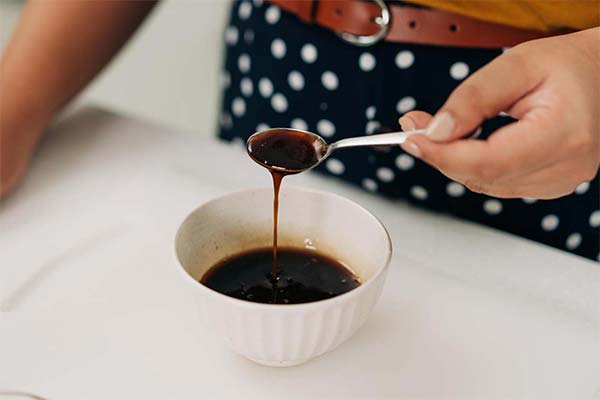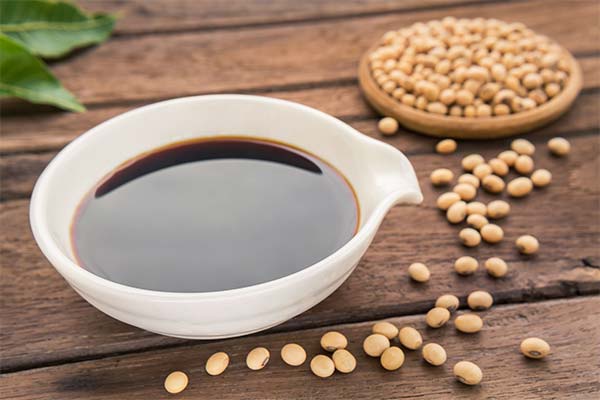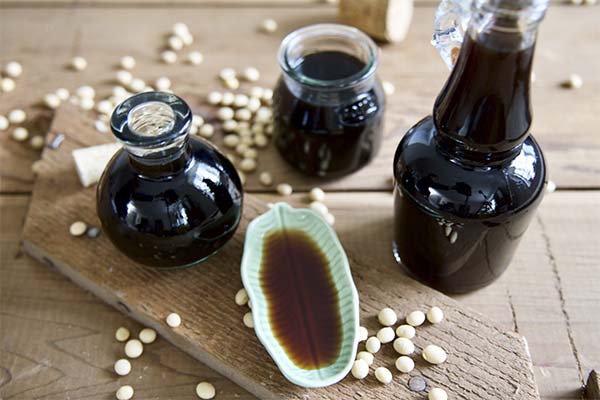Dark brown salty sauce is one of the main ingredients in Asian cuisine, made by fermenting soybeans and wheat. The product has many health benefits, but this applies only to natural sauce. According to experts, almost 90% of the product is produced chemically, with hydrolyzed vegetable protein listed in the composition.
Production of soy sauce
Classic sauce making takes months and involves several steps:

- Soybeans are soaked, stewed. The wheat is roasted and milled to accelerate fermentation.
- Prepared ingredients are combined, aspergillus mushrooms are added.
- After three days, the wort (koji) is placed in a tanker, poured with a salt solution. The mixture, called moromi, is left to ferment for two months to three years. The salt acts not only as a flavor enhancer, but also as a preservative, preventing the development of pathogens.
- The fermented mass is first filtered, then pressed for several hours.
- For three days the raw sauce is left to stand to separate suspended solids, then heated. Pasteurization kills yeast, mold fungi, stops further fermentation.
The last step in making soy sauce is bottling.
The product is not always made by natural fermentation. To make it cheaper, acid hydrolysis is used, which shortens the fermentation period to a few days.
Steps in making soy sauce chemically:
- Soybean is combined with hydrochloric acid, heated for 20 hours until the proteins are broken down into amino acids.
- The reaction is stopped by cooling the mixture.
- An alkali is added to neutralize the acid.
- The sauce is filtered, sugar, caramel, coloring agent, starch, and preservatives are added.
Chemical hydrolysis makes the product cheaper, but worsens its organoleptic properties. The synthetic substance is dangerous to health, because the production process produces the carcinogen chlorpropanol.
Useful properties and harms of soy sauce
There are more antioxidants in naturally fermented soy sauce than in red wine. In addition, the product contains a full set of amino acids, significant amounts of riboflavin, nicotinic acid, manganese, phosphorus, magnesium, potassium.

The usefulness of the sauce:
- Prevents cancer, anemia, rickets, anorexia.
- Stimulates blood circulation, cleans vascular walls of cholesterol accumulation.
- Supports gastrointestinal, nervous, cardiovascular, reproductive systems.
- Regulates blood pressure, acid, water, electrolyte balance.
- Strengthens the immune system.
- Mineralizes bone tissue, tooth enamel.
- Helps with carbohydrate, protein metabolism.
- Promotes weight loss.
The product of Asian cuisine due to the content of hormone-like substances reduces the symptoms of menopause, prevents the development of osteoporosis. Because of its low glycemic index (20 units), the brown liquid with a pungent smell is included in the diet of people with diabetes.
The main disadvantage of the product is the high concentration of sodium. Nutritionists warn that its consumption should be limited to 1-2 tbsp. per day and not to season dishes with it on a regular basis.
Soy sauce is contraindicated in hypertension, allergies, kidney failure, pancreatitis, ulcers, gastritis, cholecystitis, pregnancy, lactation.
Culinary Uses.
A universal seasoning with a combination of five basic flavors (umami, sweet, sour, salty, bitter) used to reduce salt intake, improve the organoleptic properties of dishes.

Soy sauce with honey is glazed before baking, roasting fish, chicken, seafood, ribs, potatoes and other vegetables.
The seasoning makes noodles, spaghetti, crumbled rice, buckwheat, and fried potatoes taste better. It goes with any foods and even some sweets, desserts (salted caramel, banoffee pie, walnut ice cream).
Soy sauce in marinades for chicken, pork, beef balances flavor, combines other ingredients and softens protein fibers.
The thick liquid accentuates the flavor of meat broths and gives rich color to vegetable, mushroom soups and stews. Sauce with vegetable oil and honey is an excellent dressing for vegetable salads. If you add spices and lemon juice to the seasoning, you get a delicious addition to seafood. A salad of potatoes, fresh cabbage or radishes will taste better if it is dressed with a salty substance mixed with sour cream.
With soy sauce, it’s easier to tolerate a weight loss diet. A splash of it on any unleavened steamed dish is enough to make it sparkle with new colors.
To make sure you don’t get the wrong product, study the label. If the sauce is made the traditional way, it will have no other ingredients besides water, soy, wheat, and salt.
The articles on this site are for information purposes only. The site administrators are not responsible for attempting to apply any recipe, advice or diet, nor do they guarantee that the information provided will help or harm you personally. Be cautious and always consult a doctor or nutritionist!
*All products recommended by thefirstdoc.com are selected by our editorial team. Some of our articles include affiliate links. If you buy something through one of these links, you help us earn a small commission from the seller and thus support the writing of useful and quality articles.




